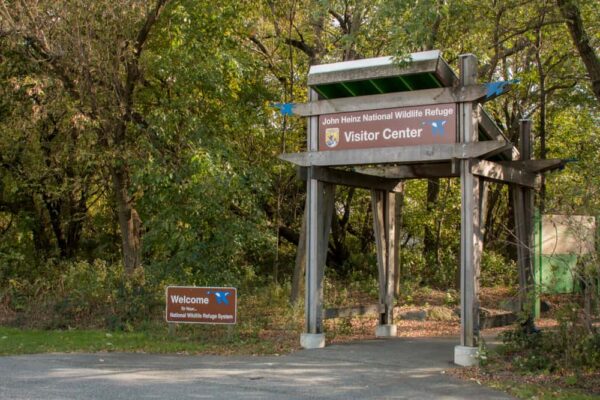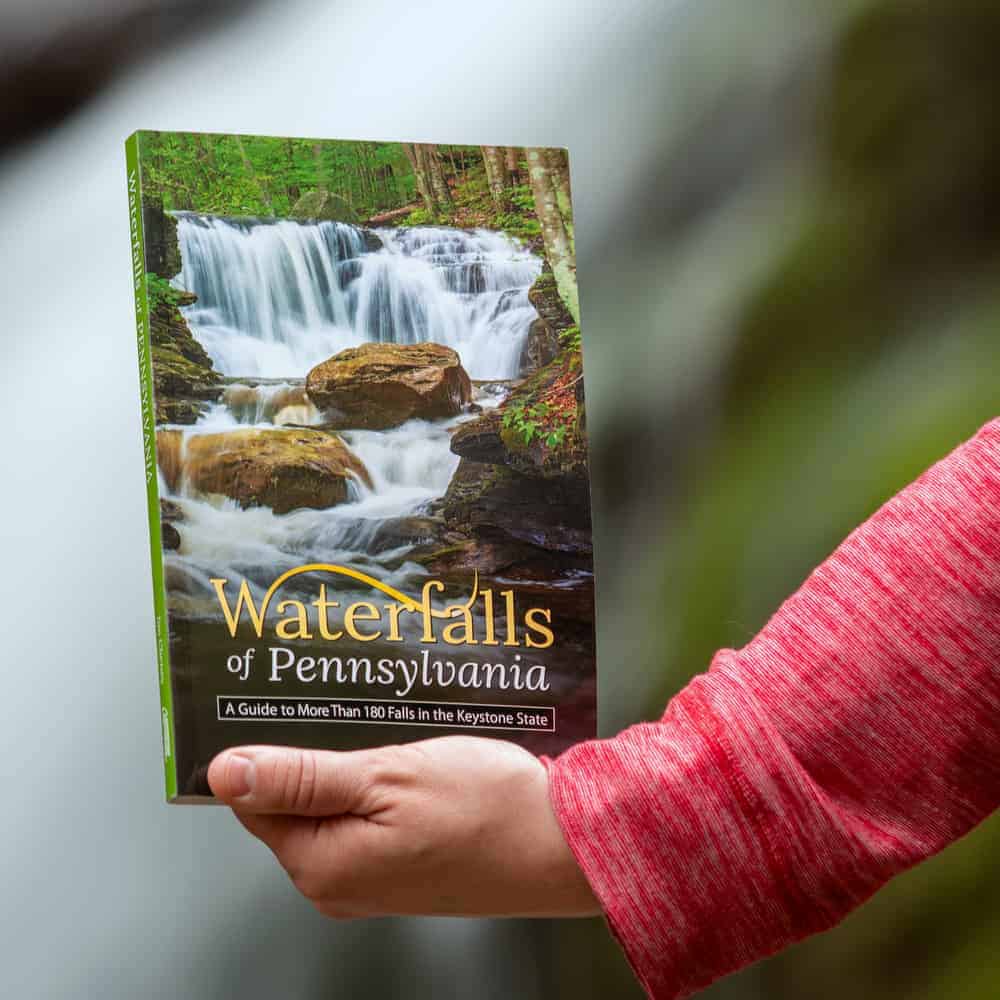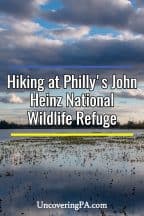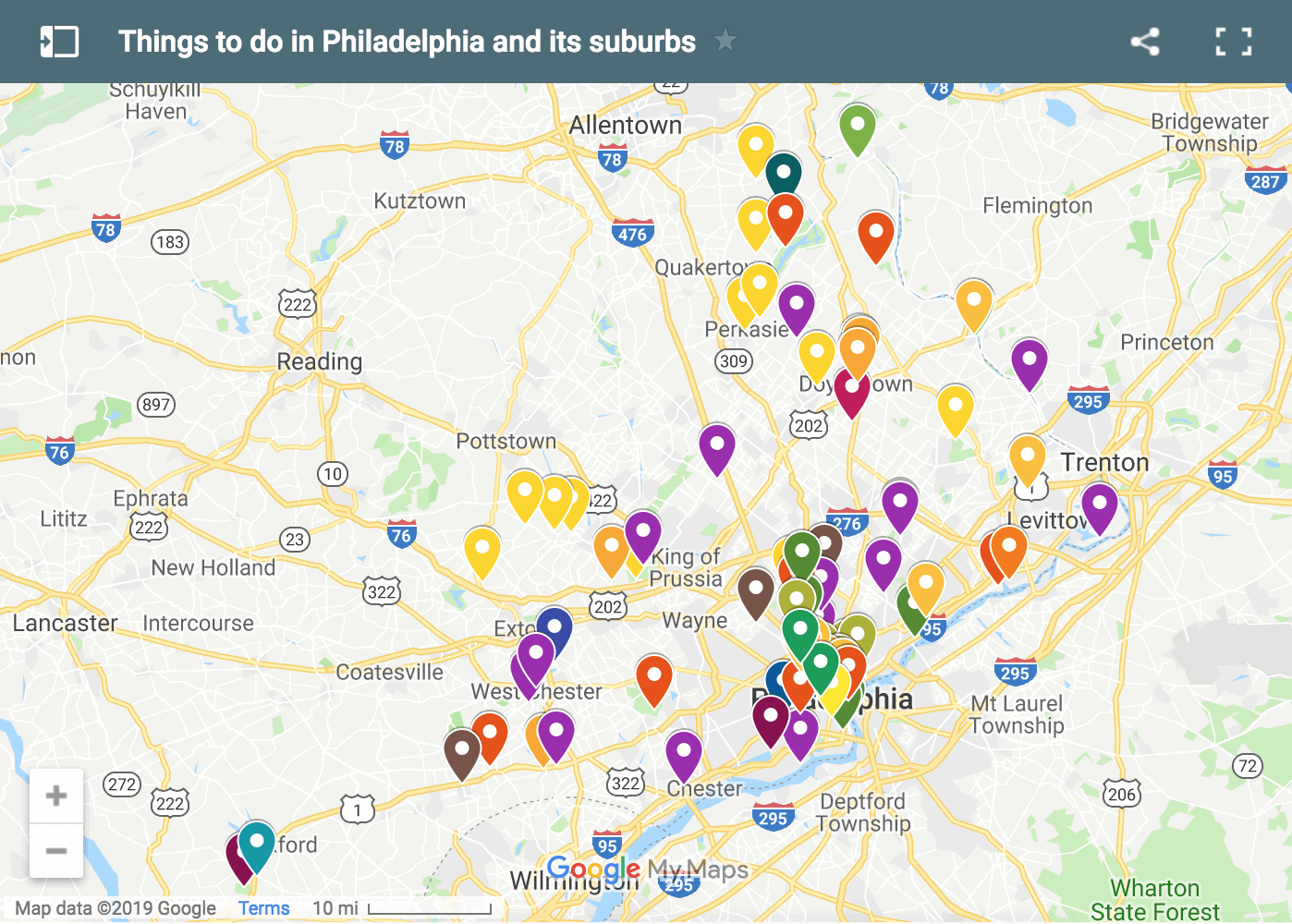Philadelphia is known for its amazing historical and cultural attractions, but one of its best hidden gems is an outdoor site.
The John Heinz National Wildlife Refuge at Tinicum is located in the southern corner of Philadelphia, stretching into Delaware County, a short distance from Philadelphia International Airport. Created in 1972 as the Tinicum National Environmental Center, this was the first urban wildlife refuge and protects the largest tidal marshes remaining in Pennsylvania.

Today, this national wildlife refuge comprises 1,000 acres of protected marshes along Darby Creek and the shores of the Delaware River.
A keystone along the Atlantic flyway, more than 300 different species of birds have been recorded here and 80 different species have been known to nest in the refuge. That’s even more than the Erie National Wildlife Refuge in northwestern PA.
In addition to protecting this unique landscape and providing a great habitat for birds, there are also some great opportunities for visitors to explore this area. (It’s also a great spot to go hiking in PA during hunting season.)
Hiking at John Heinz National Wildlife Refuge offers a great chance to see the beauty of this land. Ten miles of hiking trails wind their way through the refuge. Most of these are very flat and offer fantastic points to see a variety of birds, enjoy the habitat, or watch the planes landing and taking off at the nearby airport.
During my visit, I decided to hike a few miles through the northern portion of the park. This easy hike offered amazing views and a chance to really explore this unique landscape.
My hike started from the Cusano Environmental Education Center. This building offers a few interesting displays that showcase the importance of these tidal marshes and the animals that live in them.

The entire loop around the Impoundment in the park’s northern area is approximately 3.5 miles. However, I elected to do a hike that was 2.5 miles in length.
Starting from the trailhead away from the education center, I hiked counterclockwise along the western side of the impoundment. After just a few minutes of hiking, this brought me to a beautiful boardwalk that stretches across the middle of the impoundment.

"Waterfalls of Pennsylvania" by Jim Cheney
If you love PA waterfalls, you won't want to miss this waterfall book from Jim Cheney, author of Uncovering PA, featuring more than 180 great waterfalls. Order it now on Bookshop.org or Amazon.

Continuing along the trail along the banks of the impoundment, I enjoyed the beautiful scenery and the many birds that can be seen here. After hiking, or more specifically walking, along the path for another half a mile, I came to the two-story observation deck.
This is a perfect spot to stop and simply enjoy the beauty of the John Heinz National Wildlife Refuge. This observation deck has a bench and several large binoculars that you can use for free. (Note: If you are looking at the park map, the observation deck is the northernmost of the observation areas noted on the map.)

While the observation deck is a good spot to turn around, I recommend continuing down the trail for another six-tenths of a mile to the second wildlife observation area noted on the park map. Along the way, you’ll pass a sign denoting a bald eagles’ nest in the distance. While you may or may not be able to see these majestic creatures, it’s still great to see this bird residing in the birthplace of America.
After hiking for approximately 10-15 minutes, you’ll see a turn off to your right. Here, a boardwalk has been built out into the marshes. Visitors can walk approximately 100 yards out into the marsh. From the walkway, it’s possible to look down and see a variety of animals below. Two covered areas offer great places to stop and protection from the elements.

From here, you have three choices. You can continue south along the shoreline and into the southern half of the wildlife refuge. This is great for those looking for a long hike or who may have a second car at the southern parking area.
The second choice is to continue looping around the impoundment in a counterclockwise direction. This will take you across the impoundment and to the eastern shores, where you will head north back towards the parking area. This hike is approximately 3.5 miles in length.

The third option, which is what I did, is to return the way you came, at least for part of the way back. While this does mean you’ll see much of the same scenery, this walk is only about 2.5 miles in length, which is a great option for those pressed for a bit of time.
However, I didn’t go back entirely the same way that I came. When I reached the boardwalk across the impoundment, I crossed that. While crossing the boardwalk, there are signs that offer a great bit of information about the refuge. It’s also neat to look into the water below and see if you can see any animals.
Once across the boardwalk, take a left turn to head back towards the education center. This short trail offers another viewing platform and is actually part of the refuge’s handicapped-accessible trail.

While hiking at the John Heinz National Wildlife Refuge might not offer as many challenges as Wissahickon Gorge in North Philly, it’s a great opportunity to get into nature within the city limits of Philadelphia.
The landscape that you see while hiking here once occupied much of the Delaware Riverfront and offers an interesting connection to the history of Philadelphia that shouldn’t be missed if you love history and the outdoors.
Getting to the John Heinz National Wildlife Refuge

The John Heinz National Wildlife Refuge is located in the southern corner of Philadelphia near Philadelphia International Airport. The northern parking area offers the best hiking along with the education center. It can be found at 8601 Lindbergh Blvd., Philadelphia, PA 19153.
The refuge is open from dawn to dusk each day with the education center open daily from 8:30a-4p.
If you don’t have a car, bus numbers 37, 108, and 115 stop at the intersection of 84th Street and Lindbergh Boulevard, about half a mile from the parking area. Unfortunately, none of these three buses run through downtown Philly.
Looking to explore more of the outdoors in Philly? Check out Wissahickon Gorge, Neshaminy Creek State Park, and our list of waterfalls near Philadelphia.



 "
"



